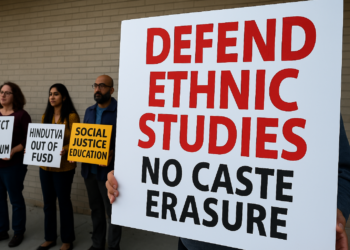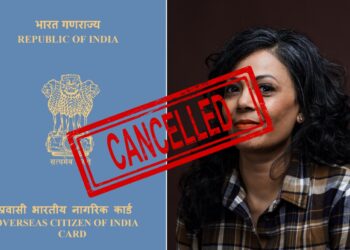The Queensland Supreme Court in Australia has overturned a law prohibiting the wearing of the Sikh religious dagger, known as the Kirpan, on school premises, deeming it “unconstitutional”.
The verdict, issued by the highest court in the state, followed a legal challenge brought by Kamaljit Kaur Athwal against the state government last year. Athwal argued that the ban unfairly targeted the Kirpan, which is one of the five essential religious symbols that Sikhs are required to carry as part of their faith.
The state’s top court ruled in favour of Athwal, declaring the legislation incompatible with the Racial Discrimination Act. ABC News reported the decision on Thursday.
An earlier court judgement last year had dismissed claims that the ban on carrying knives was discriminatory. However, this week, three judges in the Court of Appeal determined that a section of the Queensland Weapons Act from 1990, which prohibited carrying knives in public places and schools, conflicted with Section 10 of the Commonwealth Racial Discrimination Act of 1975.
In response, the Queensland Education Department stated that it is assessing the implications of the court’s ruling. The department conveyed, “As this legal decision has just been handed down, the department will now consider any implications.”
Athwal’s legal representative, as cited by ABC News, remarked that the court faced a challenging task “in balancing the individual’s right to practise their religion and manifest their faith with the rights of students and teachers to a safe environment.”
The lawyer added that today signifies a milestone for adherents of the Sikh faith, enabling them to freely practise their religion and engage in school communities without encountering prejudice. Athwal’s client expressed contentment with the court’s judgement.
The kirpan represents a curved, single-edged blade that holds a significant role within the religious attire of Khalsa Sikhs, forming a key component of their mandated uniform known as “The 5 Ks.” These sacred articles are stipulated by the Sikh Code of Conduct and are integral to Sikh faith practices. In contemporary times, the kirpan typically takes the form of a dagger or knife.
The Sikh Rehat Maryada specifies that there is no fixed length for the kirpan. Historically, the sword extended over 91 cm (3 feet). This religious injunction traces its origins to Guru Gobind Singh’s decree in 1699, a pivotal event that established the Khalsa order and introduced the five articles of faith collectively known as the five Ks. Among these, the kirpan stands as one of the essential symbols.
Adherents of the Sikh faith are called upon to exemplify the qualities of a “Sant Sipahi,” embodying the characteristics of a “saint-soldier.” This dual identity encompasses fearlessness on the battlefield and the compassionate treatment of defeated adversaries.
Kirpans possess a curved design with a solitary cutting edge, which may be either sharp or blunt, contingent upon the wearer’s religious convictions. The dimensions of kirpans vary, and a Sikh who has undergone the Amrit Sanskar initiation ceremony might carry multiple kirpans. These ceremonial blades are requisite to be constructed from either steel or iron, as per religious guidelines.
In contemporary times, deliberations have unfolded regarding the permission for Sikhs to carry the kirpan, a ceremonial blade integral to their religious beliefs. These discussions encompass the intersection of the kirpan with regulations pertaining to bladed weaponry, leading some nations to grant exceptions for Sikhs.
Beyond the realm of legal considerations, additional complexities arise, including the question of permitting kirpans on commercial aircraft or within security-regulated zones.
In May 2021, the state of New South Wales introduced a prohibition on bringing knives, including kirpans, onto school premises following an incident on May 6th, wherein a 14-year-old student allegedly wielded his kirpan to stab a 16-year-old fellow student in a Sydney school located in the north-western part of the city.
This measure prompted reactions from Sydney’s Sikh community, who vocally defended the rights of their children to carry religious articles to school. Subsequently, the Department of Education in the state reconsidered its stance in August 2021, revising its approach and implementing fresh guidelines for the presence of kirpans. These guidelines entail:
- Kirpans must not exceed 8.5 centimetres in length and must lack sharp points or edges.
- Kirpans are to be discreetly worn beneath clothing.
- During sporting activities, kirpans are to be temporarily removed.
By August 2023, a significant development emerged in the state of Queensland, where a prior prohibition on carrying knives within schools and other public locales was repealed. This change in policy was prompted by Australian Sikh Kamaljit Kaur Athwal, who pursued legal action against the Queensland state government in 2022. The Supreme Court of Queensland determined that the ban, enshrined in section 55 of the Weapons Act 1990 (Qld), ran afoul of the Racial Discrimination Act 1975 (Cth).











